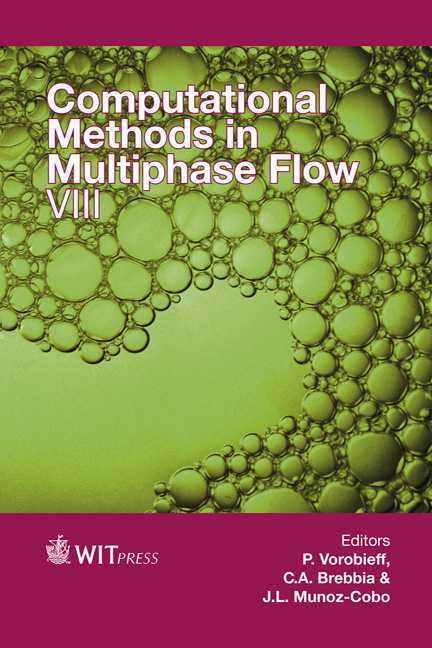Three-dimensional Visualization Of Natural Convection Of Miscible Fluids Due To The Density Difference In A Packed Bed
Price
Free (open access)
Transaction
Volume
89
Pages
12
Page Range
475 - 486
Published
2015
Size
775 kb
Paper DOI
10.2495/MPF150401
Copyright
WIT Press
Author(s)
T. Suekane, S. Sakai
Abstract
Understanding of natural convection of miscible two phases in porous media is of great importance to problems of geological storage of carbon dioxide. We consider saltwater–freshwater fingering instabilities in a saturated porous medium. Plastic resin particles with an average diameter of 320 μm or 440 μm were packed 50 mm in height in a tube with the inter diameter of 32 mm. Development of the fingering due to instabilities and natural convection of freshwater and saltwater in porous media have been imaged by means of micro-focused X-ray computer tomography (CT) every three minutes. At early stages of convective mixing, ripples appear on the contour surface of the concentration of sodium iodine and grow to be fingers which extend vertically downwards with time. As fingers proceed downwards, the concentration of sodium iodine in fingers are reduced. As a result the convective mixing is rapidly suppressed. With an increase in the density difference and the permeability, the development of the natural convection occurs more quickly. The standard deviation of CT values in the particle pack was used to evaluate the critical time and the mixing time of natural convection. The estimated critical time is in the range between 200 s and 600 s. The mixing time estimated in present work agrees well with the linear stability analysis. Convective mixing processes are modeled with a one-dimensional diffusion equation with an apparent diffusion coefficient, of which order is in the range from 10−6 to 10−5 m2/s.
Keywords
natural convection, X-ray imaging, fingering, Rayleigh–Darcy number





